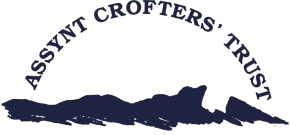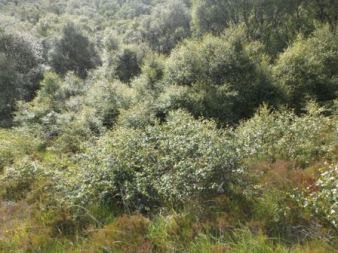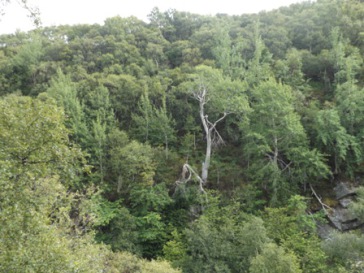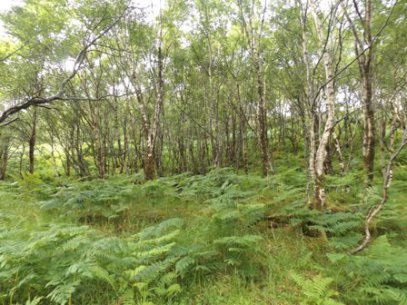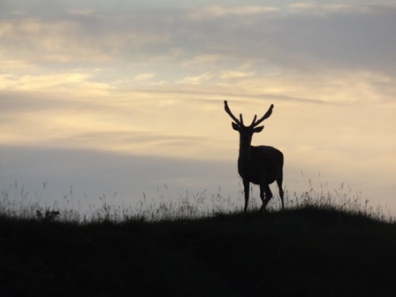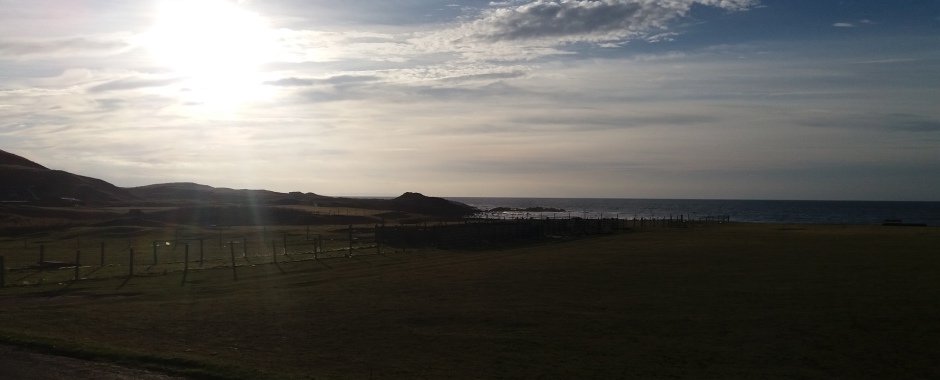
Scottish Natural Heritage in Assynt - The New Clearances
The follwing article, published in Am Bratach, makes the case that the Scottish Government’s main land use and conservation advisory body Scottish Natural Heritage (SNH) is currently not fit for purpose and that it needs to be restructured urgently if it is to regain the confidence of communities across the north and west of the Highlands.
The article calls for a change in the way that Scottish Natural Heritage currently operates, based on their disastrous intervention in the
Assynt Peninsula that cost the tax-payer close to £1 million. It describes the chain of events that led the Board of SNH to decide first to use their statutory deer powers on the Assynt Peninsula and
then to reverse that decision. The article presents an analysis of what went wrong and makes recommendations as to how SNH should change so that what happened in Assynt does not happen
elsewhere, either to other fragile local communities, or to landowners and farmers more generally.
What happened was partly due to a failure on the part of the politicians concerned with overseeing SNH's activities, a point made in the article.
Ray Mackay
Vice Chair, Assynt Crofters' Trust
Chair, Assynt Peninsula Deer Management Sub-Group
Written by Ray Mackay and Victor Clements, an in depth piece entitled "SNH Must heed the lessons in Assynt"
Am Bratach No 318_Apr18 Pages 6 and 7.pd[...]
Adobe Acrobat document [300.0 KB]
The Battle for Assynt- An Investigation [...]
Adobe Acrobat document [5.9 MB]
Link to Field 2 Stream TV video interview on Youtube:
Deer Management Update (21st August 2017)
SNH asked for a meeting to discuss the on-going, well-publicised conflict over deer
numbers on the 'Assynt Peninsula' and the state of the Ardvar Woodlands. The Board of SNH had previously decided to issue Section 7 Agreements and, if any party refused to sign up, to issue a Section
8 Control Order. ACT has always said that they would not sign a Section 7 Agreement because, although it is described as 'voluntary', SNH has the power to decide whether the agreement has been kept
or not and, if they judge it has not been kept, they can impose a Control Order.
The meeting was held on 9th August. Present at the meeting were Nick Halfhide
(SNH), Michael Ross (Ardvar), Don O'Driscoll (JMT/Quinag), Victor Clements (the author of the draft Deer Management Plan for the Assynt Sub-Group) and Ray Mackay (ACT).
No agreed document has been forthcoming, as yet, although it is clear that SNH have chosen to backtrack on their decision to go down the Section 7/Section 8 route.
There will be further updates as and when available.
An Open Letter to the Board of SNH.pdf
Adobe Acrobat document [297.7 KB]
Background
There is a very significant land use story developing on the Assynt Peninsula in North-West Sutherland at the moment. Superficially, it is a story about deer and woodland regeneration. The Scottish Government, through its advisors, Scottish Natural Heritage (SNH), are all set to impose a statutory deer cull to protect the natural environment for the first time. Many will welcome such an intervention, but all is not as it seems.
The target for this intervention is not some rich, intransigent landlord, but a group of local crofters. That group is the Assynt Crofters’ Trust (ACT) who, in 1993, became the first and most high profile community group to buy out their land in the Highlands, to widespread acclaim at the time.
This is not a story about trees and deer, which we believe to be broadly in balance. It is, rather, a story about how the staff of a Scottish Government agency made mistakes and then tried desperately to cover their tracks once it became apparent that the evidence on the ground did not match the narrative they had presented to their Board. And the consequences could be financially devastating both for the Crofters’ Trust and the wider Assynt community.
The Assynt Crofters’ Trust will not be signing any statutory agreement, and here we are setting out our reasons why.
Regenerating native woodland in the Ardvar woodlands, July 2017
The Story
On the 29th June at their Board meeting in Battleby, SNH effectively began the process of issuing to members of the Assynt Peninsula Deer Management Group (APDMG) the first Section 8 Control Order ever in Scotland. The picture that has been presented by SNH officials to the SNH Board, the Scottish Parliament and the general public is of the woodland at Ardvar, a Special Area of Conservation (SAC) and a Site of Special Scientific Interest (SSSI), being destroyed by increasingly large numbers of deer which the local crofters refuse to shoot. The reality, however, is very different, as all locals and frequent visitors to the area will attest. The woodland is expanding with regeneration throughout and the local deer management group is maintaining deer numbers at a sustainable level while allowing income to be generated through deer-stalking – a significant part of the fragile economy of the north-west Highlands.
Aspen and birch regeneration at Ardvar, July 2017
What has led to this calamitous situation is a combination of two significant errors on the part of a small cabal of SNH officials with too much unregulated power and a patronising approach to local people and the knowledge they possess of their own environment.
The first error relates to the Ardvar Woods and how they are categorized. This is a birch wood that was mistakenly designated as an oak wood. None of the various criteria for defining an oak woodland applies in the case of Ardvar. There is not a minimum of 30% oak canopy cover (the UK Biodiversity Action Plan habitat definition); there are not even any obvious stands of oak and there is no oak “distributed throughout the woodland”, contrary to what SNH officials have told their Board; only a mere scattering of individual trees, possibly less than ten in total. SNH’s own habitat survey, published only this month, identifies a grand total of 3 oak seedlings out of 8800 sampled, a tiny fraction of one percent. This is what you might see in a birch wood, not an oak wood.
You might expect the fact that there was so little oak present in an upland oak woodland might bother SNH. Not at all. According to their Senior Woodland Advisor –
‘It has pretty much what you’d expect from an upland oak wood except for the oak. Like chicken-flavoured crisps, you don’t need to have any chicken.’
In other words, it’s an oak wood if SNH says it’s an oak wood.
What you see when you walk through Ardvar Woods is an extensive and mixed age woodland habitat, which has been expanding year-on-year for the last 40 or so years.
25-30 year old established regeneration in Ardvar woodlands, July 2017
What SNH officials report to their Board, however, in their words, is a woodland in ‘unfavourable condition’.
Very specifically, they say:
“The woodlands of Ardvar SSSI and SAC, notified for upland birch woodland and old, sessile, oakwood habitats respectively, are in unfavourable condition as a result of prolonged grazing pressure from red deer. This has led to an impoverished ground flora, poor age structure with senescent trees and little regeneration beyond seedling stage.”
Such a description would not be unusual for some woods in the Highlands, but we would invite you to compare this statement with the photographs in this document. Indeed, we would invite you to come in person and see for yourself. We are proud of the regeneration taking place in the Ardvar Woods.
The above description was made to the SNH Board in both 2014 and 2016. In each case, the Board paper was framed as a case study in to why deer management in Scotland was not working. This is the wider context to this problem, and certainly the real agenda at play. SNH want to manage our deer for us. We will not allow them to do that.
One of SNH’s own consultants, whom they sent to Ardvar, realised very quickly that the picture that SNH officials were painting was very far from reality. He has been trying to convince them for more than a year now to change tack, but too much time, money and effort has been invested and too many reputations are at stake for any change to occur. When SNH time, external consultant costs, helicopter costs, fencing costs and income foregone due to cancelled stalking are taken into account, the woodlands at Ardvar will have cost the Scottish taxpayer and the local community almost £1 million to date. This is a national scandal, and it must be addressed. Our public finances and rural economies cannot sustain such needless losses.
The second error that SNH officials made was to confuse administrative convenience with reality. The local deer management group, comprising 11 landowners, manages the ‘Assynt Peninsula’ deer herd, as it is known. Our neighbours to the north, south and east run their own management groups. The problem is that SNH haven’t yet managed to let the deer know that they are expected to stay in the area nominally allocated to them. There is considerable movement of deer, particularly in bad weather, across the A894 to the lower and more sheltered ground of the Assynt peninsula. This is categorically denied by SNH officials, who tell their Board that the Assynt deer herd is a stable and closed entity, despite their own helicopter counts telling a different story. They refuse even to heed their own evidence.
The SNH case for reducing the Assynt deer population to what they deem to be an acceptable density is based on these two erroneous arguments. Each one is shoogly on its own but, like 2 drunks coming out of a pub who can’t stand up unaided but who can stay upright by leaning on each other, together they have been packaged and presented to the SNH Board and the Scottish Parliament as scientific evidence.
If these officials have their way, the deer population on the Assynt peninsula will be reduced to about 2 deer per square km. This is the density required to achieve what they have stated they wish to achieve. That will mean an annual cull of 25 stags for the whole Assynt peninsula area, if/when the deer population is reduced to the level SNH are looking to reach. To give some context, last year, 170 stags were shot on the Assynt peninsula (62 by the Assynt Crofters, which gave us a revenue of almost £9000 after expenses). This has been presented to the Board of SNH as being ‘a relatively minor sustained reduction in browsing pressure’. What may appear ‘relatively minor’ to a salaried, pensioned government official sitting behind a desk in Inverness would be economically devastating for Assynt.
The SNH officials dealing with Assynt have refused to participate in anything like meaningful dialogue: when asked to explain, they patronise; when faced with truths which conflict with their own version of events, they refuse to engage. And, having attended the Board meeting when the fate of Assynt was decided, it was obvious that these same officials have not given their Board anything like a true picture of what has been happening. Their approach is one of highly prejudiced interpretation of the evidence available. They have little empathy or indeed understanding of the issues involved. One response to the recent Deer Management Review described their attitude as one of “institutionalized incognisance”.
The Assynt Crofters won the right to manage their own land almost 25 years ago and just when we are generating enough income to employ local people and offer bursaries to young people from the area who wish to better themselves, we find ourselves facing the threat of a Section 8 Control Order and a £40,000 fine, not to mention having to pay for the SNH contractors who would come on to our land and kill our deer. This is surely not what the Scottish Government means when it talks of encouraging local communities and promoting community involvement. We did not throw off the chains of one landowner 24 years ago, to have them replaced by another’s now.
This is a sorry tale of a small clique of individuals with too little respect for local knowledge, too much power and little in the way of accountability, riding roughshod over a local community, putting livelihoods at risk and wasting hundreds of thousands of pounds of Scottish taxpayers’ money into the bargain. And now, having committed themselves, they cannot retreat from their position for fear of losing face - all for the sake of a bonny birch wood in a remote corner of Sutherland, which, incidentally, means a lot more to us than it will ever do to them. SNH officials come and go, the crofters remain.
What future for deer management in Assynt?
In Conclusion
The Assynt Crofters’ Trust is perfectly capable of managing its own land. We have demonstrated that over the years. We have planted over 1000 ha of native woodlands in our short history, regenerated much more, and supported others in doing likewise. We have a practical plan for dealing with the designated sites. We can manage our own deer, and can achieve a balance that suits us and our environment here. Anyone driving through North Assynt can see the regeneration there. SNH officials cannot see it because they don’t want to see it.
Our resolve to deal with this issue is very strong. We will not have our land management questioned in this way, and we will not have the situation here misrepresented. We have a leadership role to play on behalf of others on this Peninsula as well, and we intend to fulfil that role. We will defend our position and our freedoms here, and as our Chairman Donnie MacLeod has recently gone on record as saying, “They can throw us in jail if they want to.’
Ray Mackay
Vice Chair
Assynt Crofters’ Trust
Dr Ray Mackay worked overseas and at the University of Edinburgh. In 2009 he was awarded an MBE for Services to Language Teaching in India. He has a croft in Achmelvich.
Media Contacts
Donnie MacLeod – Chair, ACT. Tel: 01571 833256
e-mail: dandg.macleod@btinternet.com
Ray Mackay – Vice Chair, ACT. Tel: 01571 844337 e-mail: redbraes@aol.co.uk
Victor Clements - Woodland Advisor Tel: (01887) 829 361
e-mail: victor@nativewoods.co.uk
Richard Cooke, Chairman, Association of Deer Management Groups. Tel: 01356 624 566
Email: rc@dalhousieestates.co.uk
Dave Mackay (Scottish Natural Heritage, Golspie Office, SNH lead on Ardvar)
Tel: 0300 067 6841 e-mail: dave.mackay@snh.gov.uk
Background information on the Assynt Peninsula Deer Management Group can be found online at http://wsutherlanddmg.deer-management.co.uk/deer-management/west-assynt-sub-group-deer-management-plan/
This includes our analysis of the designated sites issue at the heart of this debate.
